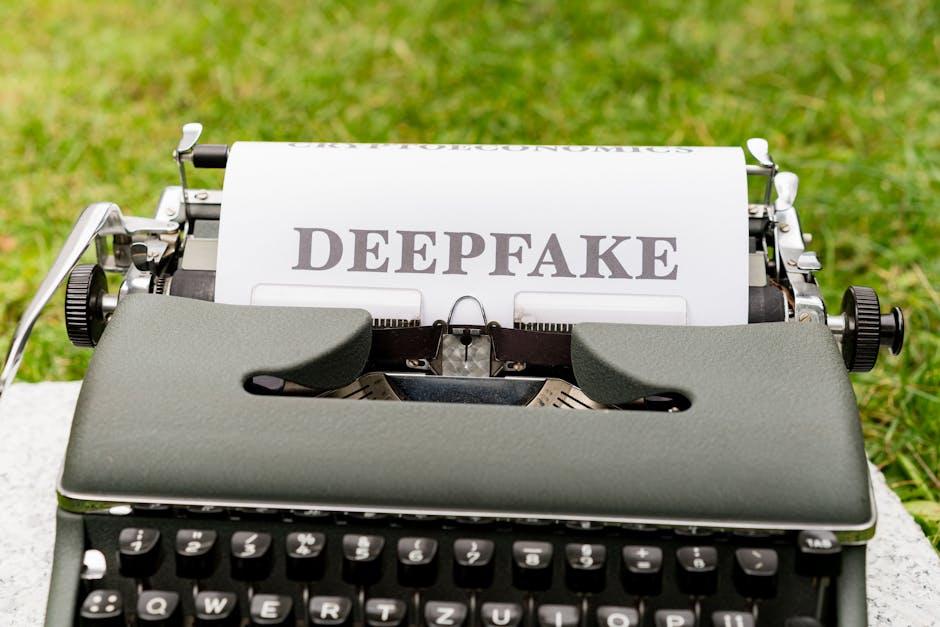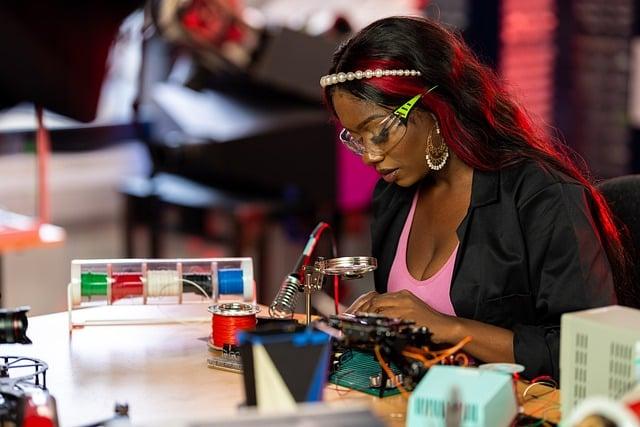In the digital age, where pixels and algorithms converge to redefine reality, deepfake technology emerges as a modern alchemist, reshaping the very essence of character portrayal. This revolutionary tool, once a mere figment of speculative fiction, now challenges the boundaries of creativity and authenticity. As filmmakers and storytellers navigate this brave new world, the line between genuine and artificial blurs, inviting both awe and unease. This article delves into the profound influence of deepfakes on contemporary narratives, exploring how they transform our perception of identity and performance in an ever-evolving artistic landscape.
Crafting Reality: The Art of Deepfake in Character Creation
Deepfake technology has revolutionized the way we perceive and create characters, blurring the lines between reality and fiction. By utilizing advanced AI algorithms, creators can now seamlessly blend the facial features and expressions of one individual with another, crafting hyper-realistic portrayals that captivate and intrigue. This innovation allows filmmakers and content creators to explore new dimensions of storytelling, offering audiences a chance to see familiar faces in unfamiliar roles or even resurrect long-lost legends for modern narratives.
- Enhanced Versatility: Actors can portray a wider range of characters, transcending age, gender, and even species.
- Cost Efficiency: Reduces the need for extensive makeup, prosthetics, and CGI, streamlining production processes.
- Creative Freedom: Empowers directors to experiment with bold, imaginative concepts without the constraints of traditional casting.
While the potential for innovation is immense, it also raises questions about authenticity and ethics in digital artistry. As this technology continues to evolve, the balance between creative freedom and responsible usage remains a focal point for industry leaders.

Navigating Ethics: Balancing Innovation and Integrity in Digital Portrayals
As deepfake technology becomes more prevalent, the challenge lies in maintaining a balance between creative freedom and ethical responsibility. Digital portrayals of characters, whether in film, advertising, or social media, must consider the impact of authenticity and consent. The potential for misuse is significant, with risks of misinformation and identity manipulation.
- Authenticity vs. Manipulation: How do creators ensure that their use of deepfake technology respects the integrity of the original content?
- Consent and Representation: What measures are in place to secure the consent of individuals whose likenesses are used?
- Transparency in Production: Should audiences be informed when deepfake technology is employed in digital portrayals?
Striking a balance requires a commitment to ethical guidelines, promoting transparency and fostering trust. As this technology evolves, so too must our frameworks for ethical decision-making, ensuring innovation serves the greater good without compromising individual rights.

Redefining Authenticity: Challenges and Opportunities in Modern Storytelling
Deepfake technology has ushered in a new era of storytelling, offering both unprecedented creative possibilities and complex ethical dilemmas. By enabling creators to seamlessly blend reality with fiction, deepfakes can transform character portrayals, allowing actors to embody roles in ways previously unimaginable. This capability challenges traditional notions of authenticity, raising questions about what it means for a character to be “real” or “genuine” in the digital age.
- Creative Opportunities:
- Reviving historical figures for new narratives
- Enabling multilingual performances without language barriers
- Allowing actors to perform roles beyond their physical limitations
- Challenges:
- Potential for misuse and identity manipulation
- Blurring lines between truth and fiction
- Ethical concerns regarding consent and representation
As filmmakers and storytellers navigate this evolving landscape, the balance between innovation and integrity becomes paramount. Embracing deepfake technology with caution and responsibility could redefine the art of storytelling, pushing boundaries while respecting the essence of human expression.

Guiding the Future: Best Practices for Responsible Deepfake Use
As deepfake technology continues to evolve, it is crucial to adopt practices that ensure its responsible use, especially in the realm of character portrayals. By adhering to ethical guidelines, creators can harness the power of this technology without compromising integrity or authenticity. Here are some key practices to consider:
- Transparency: Always disclose the use of deepfakes to audiences. Clearly label content that utilizes this technology to maintain trust and avoid deception.
- Consent: Obtain explicit permission from individuals whose likenesses are being used. This ensures respect for personal rights and prevents misuse.
- Purpose: Use deepfakes for constructive purposes, such as education, satire, or creative storytelling, rather than manipulation or harm.
- Verification: Implement fact-checking processes to prevent the spread of misinformation, ensuring that deepfake content does not distort reality.
By following these guidelines, creators can contribute to a future where deepfake technology enhances, rather than detracts from, the richness of modern character portrayals.

